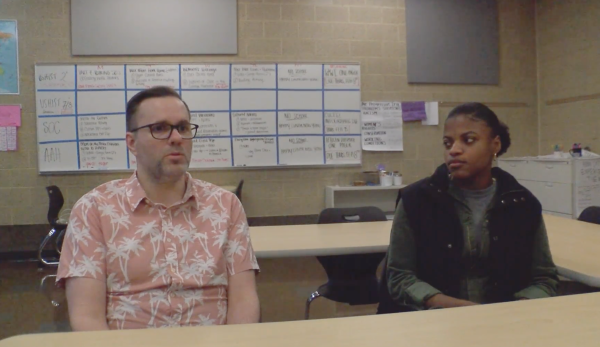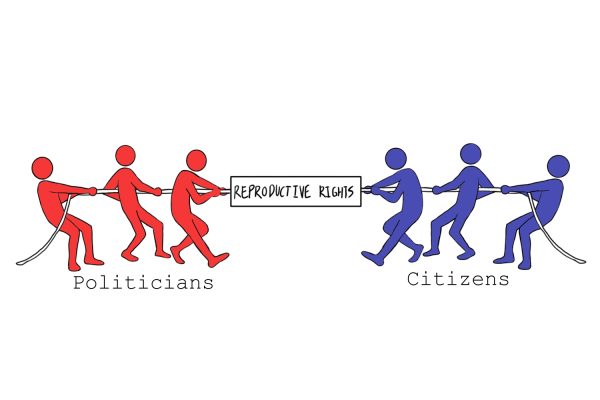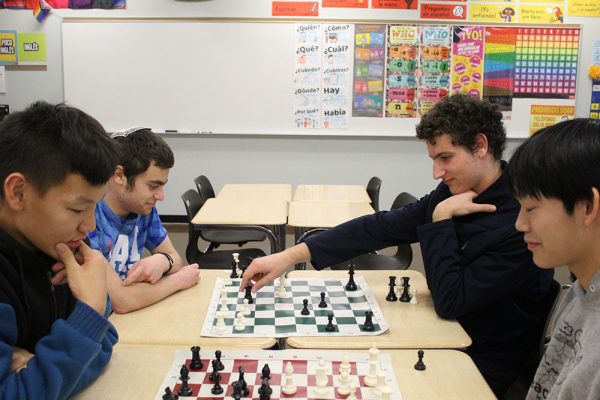Inequitable School Funding a Persistent Problem in Ohio
With Republican-controlled government at both the state and federal level, and “school choice” supporter Betsy DeVos selected for Secretary of Education, the problem is not likely to be addressed any time soon.
School funding is something that doesn’t receive nearly as much attention as it should. However, for some students, it can be the difference between having a full-time school nurse or a music class, things that are viewed by many educators as essential.
And in Beachwood, where we benefit from one of the highest per-pupil expenditures in the state, it’s hard to imagine what it’s like to try to learn in a school that can not afford to provide adequate services.
For the fiscal year of 2015, Ohio spent more than it ever has on education, nearly $10 billion dollars, on its 1,031 districts, which include public districts, joint vocational districts, and public community schools. This comes to an average of $9,640,615.17 per entity.
Ohio funds its schools using a combination of state funds, property and income taxes, and federal funds to supply its schools.
The amount of state funds that a district receives is calculated using a formula that takes into account the enrollment and the property values in the area. A district with lower property values and a student body of 500 will receive more money from the state than a district of the same size with higher property values, assuming that all other factors remain constant.
There is often a disparity seen between districts such as Beachwood, whose relatively small student body and robust property tax base allowed it to have an operating budget of $29,283,687, and spends an average of $17,315.85 per pupil for the 2015 fiscal year, and a district such as Bellaire, a similarly sized rural district located in Southeastern Ohio, which has a much smaller property tax base, and, thus, an operating budget of $11,904,264, and which spent an average of $7,923.29 per pupil in the same year.
Looking at these numbers from a purely monetary perspective, the disparity isn’t very apparent. After all, Bellaire’s operating budget of $11,904,264 is still 2 million dollars over the state average. However, what isn’t taken into account is the disparity in socioeconomic status between the two communities.
According to the latest available census data, Bellaire has a poverty rate of 23.1%, which is greater than the state rate of 14.8%, the national rate of 15.1%, and almost 6 times larger than Beachwood’s poverty rate of 4.1%.
Poverty is something that vastly affects the quality of someone’s education. People in poverty tend to have less stable home lives, higher high school dropout rates, and less of a support system at home, all of which can have a negative impact on a child’s education.
The disparity between these two districts is clearly seen in the latest state report card.
Beachwood met 28 of the 29 standards, had a performance index score of 107.42, and was, overall, the 5th ranked district in the state. Its lowest grade was a C, of which it had one.
Right now, the two biggest problems we face in education funding is that there is no adequacy, and no equity…a great disparity exists between the top and bottom 25%. By pumping more money into the system at the state level, you move towards a more adequate and equitable program for everyone.
— William L. Phillis, Executive Director of The Ohio Coalition of Equity and Adequacy of School Funding
When compared to Bellaire, the differences are staggering. Bellaire only met 8 out of the 26 standards set by the state, and had a performance index score of 82.11. Its highest grade was a B, of which it had one, and it had 8 F’s, 6 D’s, and 1 C. It’s almost as if these two districts don’t even exist on the same planet.
School funding is something that, clearly, should try to ensure an even playing field, and attempt to close the gap that obstacles such as poverty pose, in order to ensure a stable and secure adult life. Clearly, the system now is not doing that, with districts with lower property values and higher poverty rates being left behind.
William L. Phillis, the Executive Director and Founder of the OCEASF (The Ohio Coalition of Equity and Adequacy of School Funding), a Columbus-based group that, in its own words, seeks to “secure high quality educational opportunities for all Ohio school children without diminishing opportunities for students who reside in higher capacity districts,” thinks the answer is simple. The state simply needs to spend more money on its future.
“Right now, the two biggest problems we face in education funding is that there is no adequacy, and no equity…a great disparity exists between the top and bottom 25%,” Phillis said. “By pumping more money into the system at the state level, you move towards a more adequate and equitable program for everyone.”
Unfortunately, with funding being primarily based on property taxes, districts like East Cleveland, which have a limited tax base, are at a severe disadvantage.
Increasing state funding to districts with lower property values seems to be the only way to move towards a more equal funding system.
“Currently, the state provides about half of the total revenue per pupil. It should actually be 70-75%,” Phillis said.
The current school funding system was actually ruled unconstitutional in 1997’s State v DeRolph, a case that Phillis was involved in. The Ohio Supreme Court ruled in a 4-3 margin that the system failed “to provide for a thorough and efficient system of common schools” as directed by the constitution, and that the government should find a solution immediately.
The decision was reaffirmed three more times between 1997 and 2003, during which no changes were made, but with the fourth ruling, the Court gave up jurisdiction on the matter, essentially waving the white flag and accepting an unconstitutional, unfair system as the norm.
Education funding is not often mentioned as a dire social issue, and its repercussions are not as apparent as other troubles facing the state government, which might explain why it hasn’t been adequately addressed.
A.J. Wagner, a former member of the state school board who resigned on Nov. 19 and had a track record of advocating for more school funding for public schools as well as more accountability for charter schools, says that some of the first things to go when a district is short on cash tend to be extracurricular in nature.
“Economically strapped districts are seeing a loss of art, music and physical education classes. Schools are losing nurses, counselors and extracurricular activities. All of these enhance the student experience and improve student performance,” he wrote in an email.

Image by Livi Eppell.
Given the current environment, it will not be easy to get an equitable school funding system.
“To fix education properly will take a leader who is willing to raise taxes and adjust tax formulas from their current configuration,” Wagner wrote. “Someone will need to pay more. Those who pay more are not likely to be happy, will complain loudly, and be sure to campaign against any such leader in the future.”
One way leaders are attempting to plug the holes in Ohio’s education system is with the advent of more vouchers for charter and private schools, something that has taken away a significant amount of money from public schools.
“Although every school district is impacted differently, on average, for every child who moves from a traditional public school to a charter school, that district will lose the state funding for two students. Beachwood is losing over $90,000 per year while Cleveland is losing over $140,000,000 each year to charter schools,” Wagner wrote.
In the future, more funding might shift from public education to these alternatives, given the likely appointment of Betsy DeVos as Secretary of Education by President-elect Donald Trump, someone who has never attended a public school, and whose children have never attended a public school.
DeVos’ reach (and money) has shaped Michigan educational funding since the 90s, pushing what they see as “school choice,” which is aimed to allow families to look beyond public education and towards charter and private schools if they feel the need to do so.
“(DeVos) has spent her family fortune on trying to obtain funding for charter schools and vouchers….” said Melissa Cropper, President of the OFT (Ohio Federation of Teachers).
One of the problems that come with these types of schools is a lack of accountability, and, frequently, a lack of success in educating students.
“As far as research shows, most charter schools are not performing any better than the public schools,” Cropper said. “There is a place for high performing charters in our system that are held to certain standards, but right now, there are way too many charter schools.”
Cropper says that charter schools have lost sight of their original purpose, and are now too focused on serving as competition for both dollars and students to public schools.
The original purpose of charters were to experiment, for teachers to be able to innovate and share their findings with the educational world,” she said. “Instead, it is now a source of competition to public schools…Education should be collaborative, not competitive.”
Overall, Cropper fears that with the appointment of Devos and a Republican-ruled government on both the state and federal level, funding could divert to block grants, which will allow the states to spend federal education dollars however they see fit, which could exacerbate the problem of inequitable funding.
“The fear is that legislators will try to create choice and advocate for more vouchers and charters over trying to effectively educate [all of Ohio’s] children,” Cropper said.

Alex Cala has been writing for The Beachcomber since the fall of 2014, when he was a sophomore. He became the opinion editor the following year. Alex tends...


















